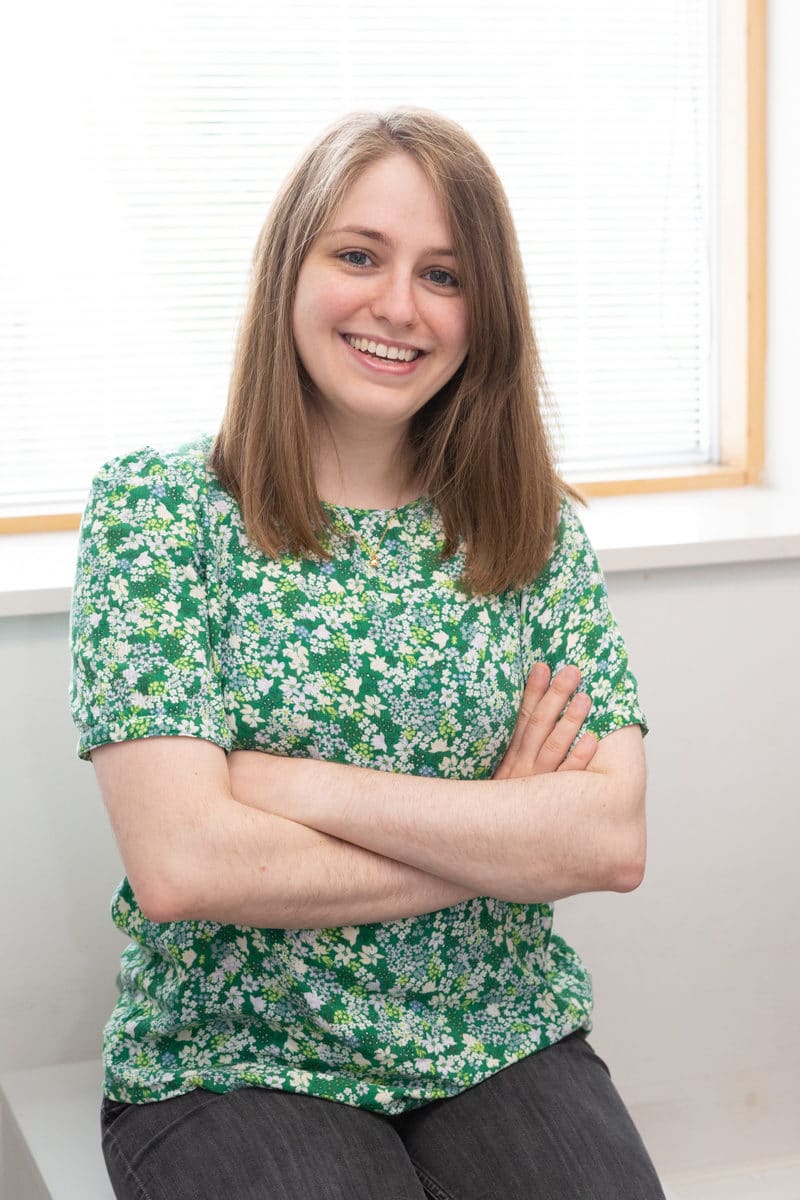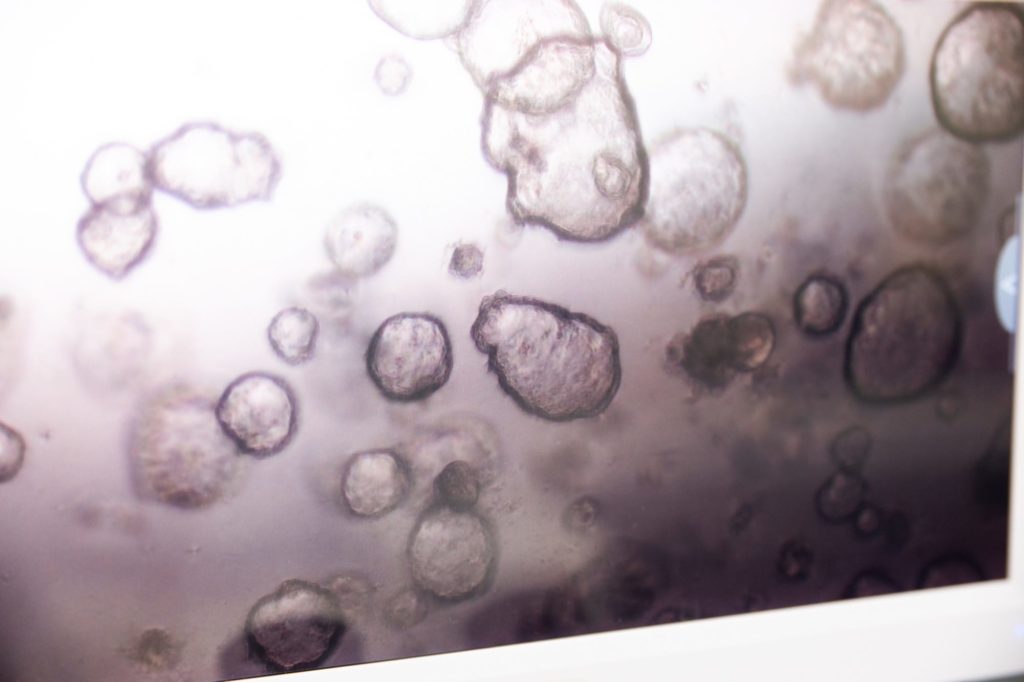
Human Developmental Biology Initiative
A five-year, £10 million research project investigating how humans develop in the first weeks and months after fertilisation, improving understanding of fertility, birth defects and regenerative medicine.
The Human Developmental Biology Initiative (HDBI) involves researchers from across the UK, including: UCL, King’s College London, the Francis Crick Institute, the Babraham Institute, University of Oxford, the University of Cambridge, the University of Dundee and the University of Newcastle.
This includes three group leaders from the Gurdon Institute: Azim Surani, Emma Rawlins and Ben Simons.
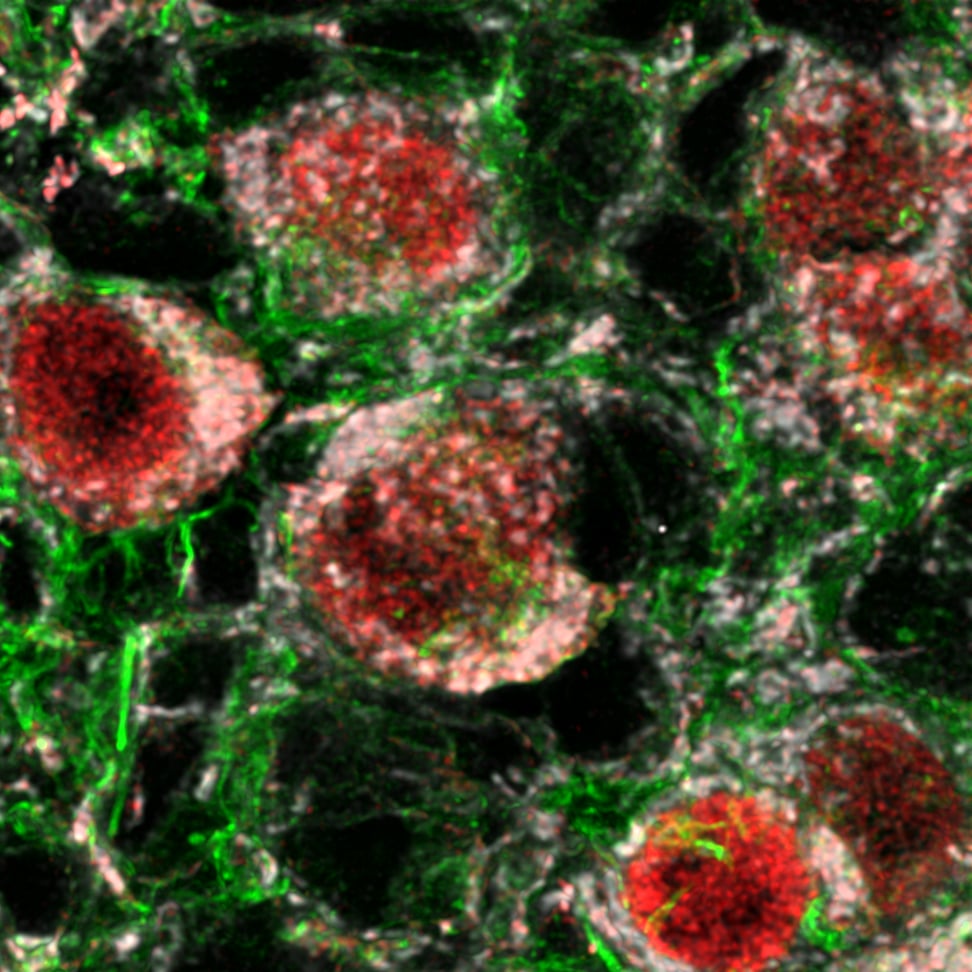
Developing human primordial germ cells visualised by Walfred Tang, Surani lab
What will the HDBI do?
The HDBI aims to better understand how humans develop. Researchers aim to build a ‘family tree’ of how cells divide and specialise after fertilisation, to understand how tissues and organs develop. They are looking at four particular time-points in human development – the early human embryo, the brain and spinal cord, the blood and immune system and the heart and lungs.
Better understanding of how ‘normal’ development works will provide new insights into how this process can go wrong (for example, in diseases and developmental disorders). Around 3% of babies are born with developmental defects – problems that often start very early in pregnancy such as heart defects, spina bifida and cleft palate. But scientists know very little about why and how they happen.
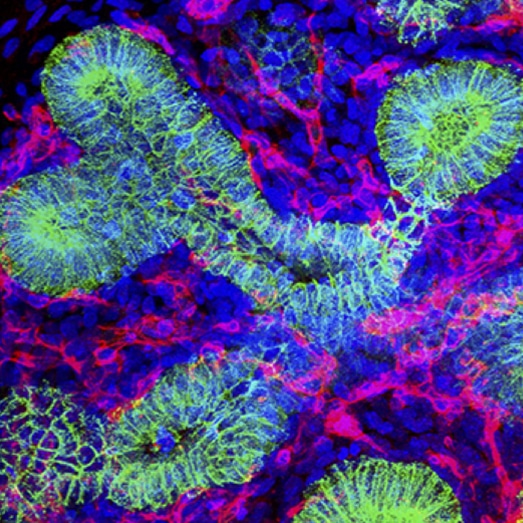
Developing human lung tissue in section, visualised by Valentin Picant, Rawlins lab
For many years, developmental studies have relied on cellular and animal models. While this has provided important information, it has also become clear that our understanding of early human development remains extremely limited and there are important differences in development of humans and animals. The HDBI brings the research community together, along with recent advances in embryo and organoid models, more sophisticated imaging techniques and genome editing so that researchers can gain unprecedented insight into human development.
In order to better understand human development (and eventually use this information to treat human diseases), researchers must use human tissues. The project will involve donated human eggs and embryos along with human fetal tissue from the MRC-Wellcome Human Developmental Biology Resource, which allows researchers access to human material ranging from four to 22 weeks of development. The UK has a strong regulatory and legal framework for working with such tissues, and the HDBI will work within and respect these regulations.
The implications of research using human embryonic and fetal tissue are likely to be far-reaching and will evolve as technologies advance.
As a result, this research places additional responsibilities on scientists. The HDBI public engagement programme, ‘What makes us human?’, will aim to foster public discussion about how this research is conducted and communicated, empowering members of the public with a greater understanding of fundamental research and enabling researchers to respond to societal needs.
If you are interested in getting involved with the public engagement project or would like more information, please contact us: hdbi-pe@bio.cam.ac.uk
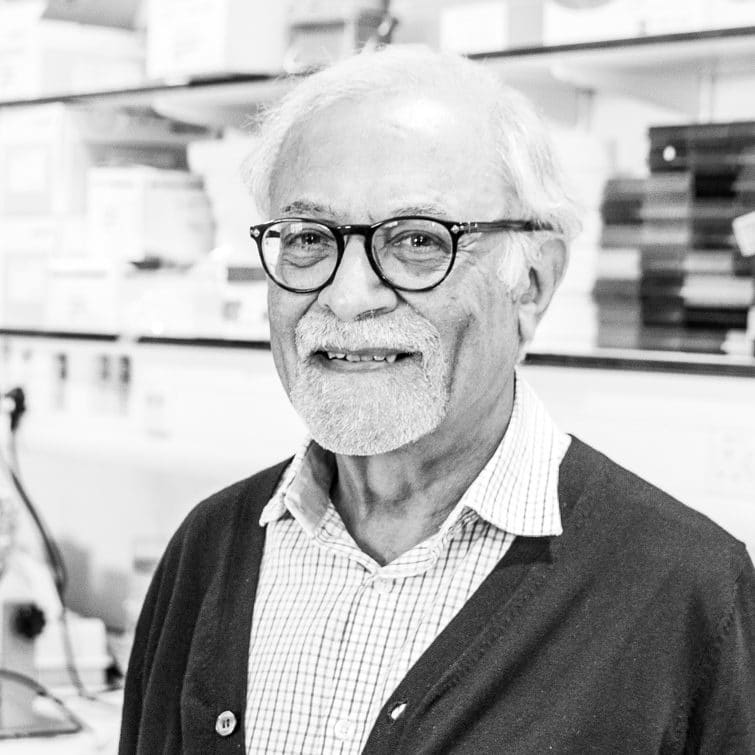
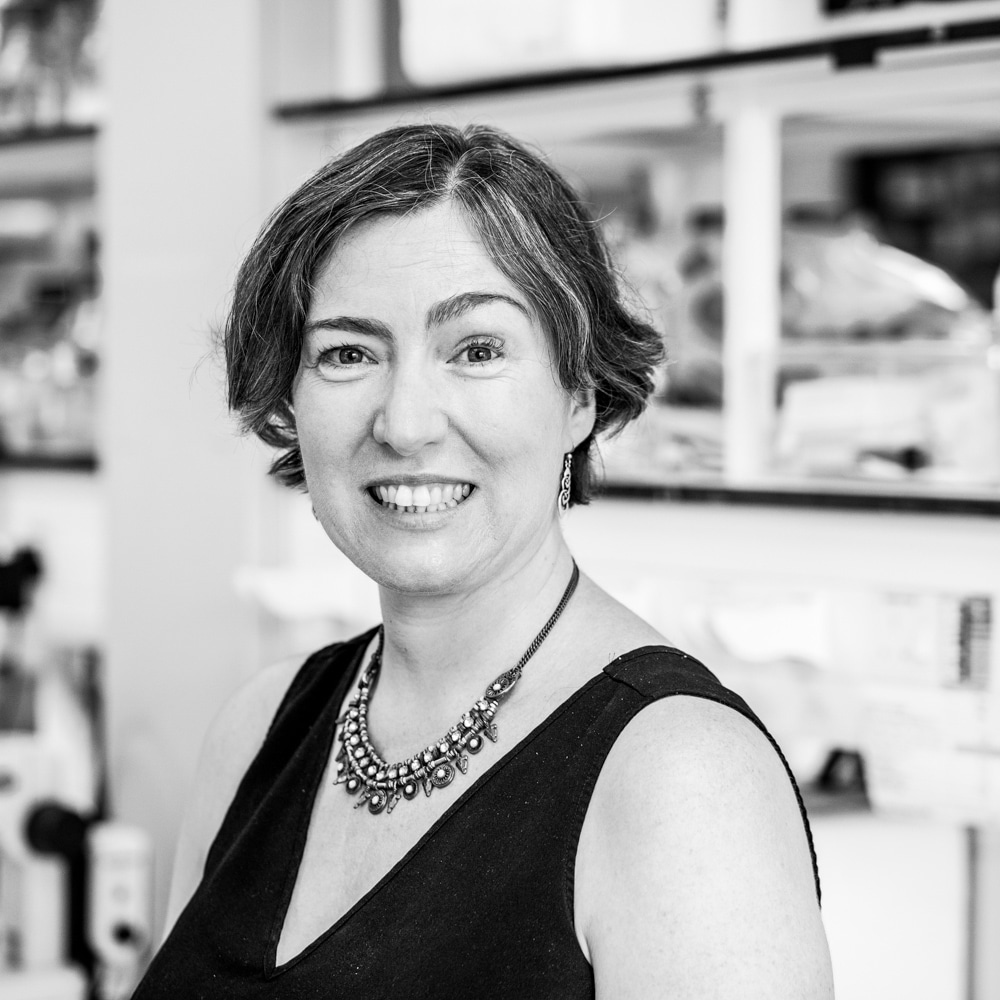
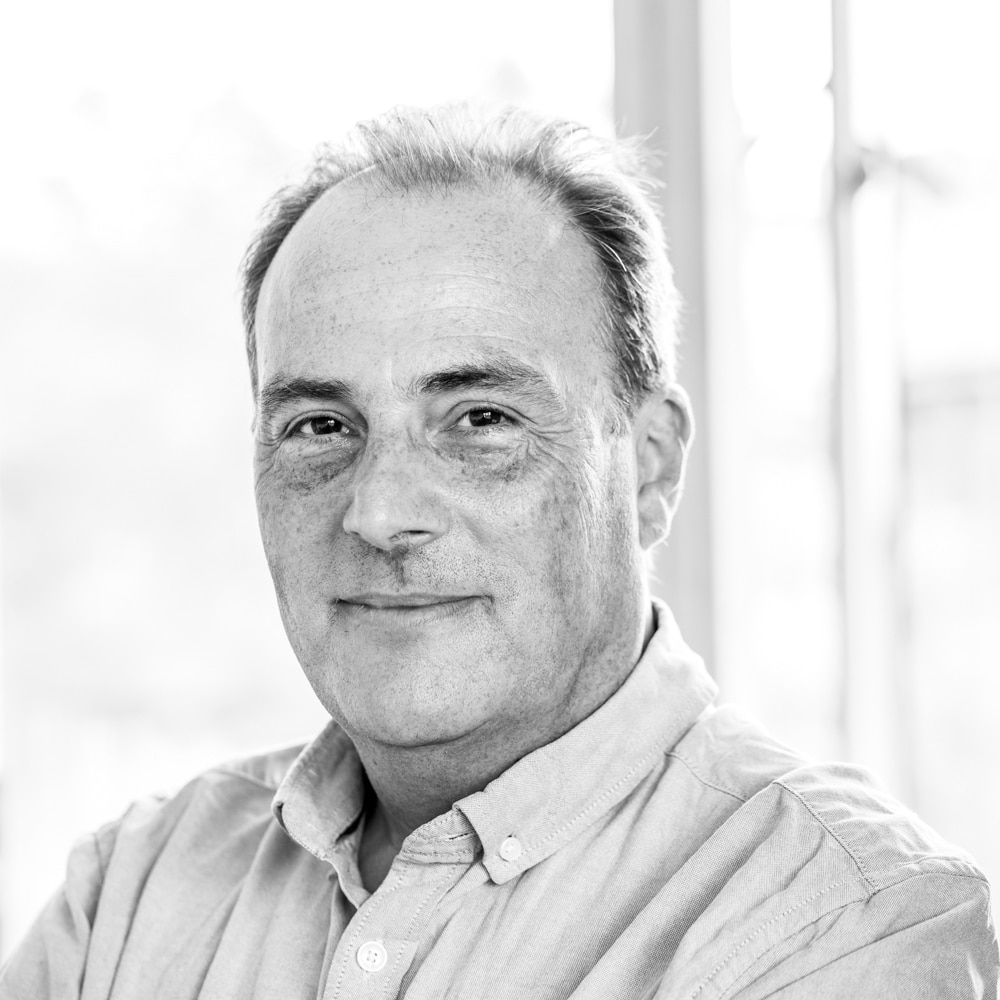
The Gurdon Institute’s role
At the Gurdon Institute, three group leaders are part of the HDBI: Azim Surani is co-lead for the research strand investigating development of the early human embryo; Emma Rawlins is co-lead for the research strand looking at heart and lung development as well being the academic lead for the public engagement programme; and Ben Simons is a lead for one of the cross-cutting technologies: ‘Computational biology and data analysis’.


